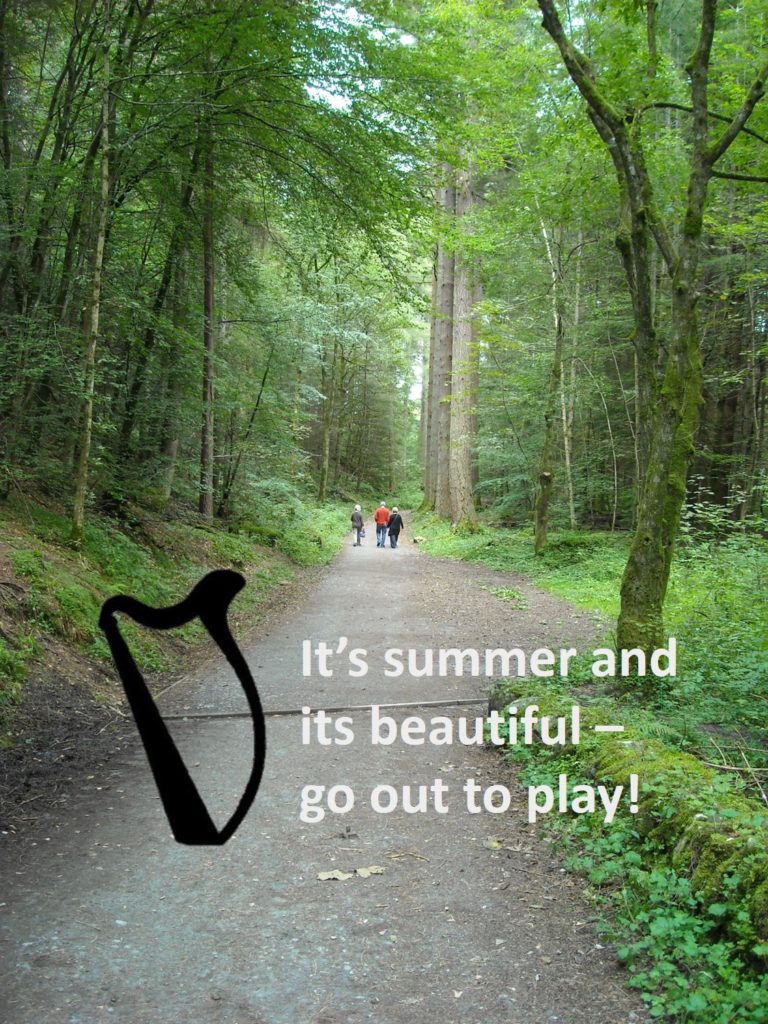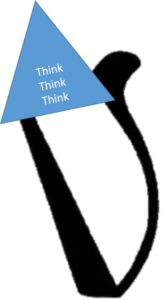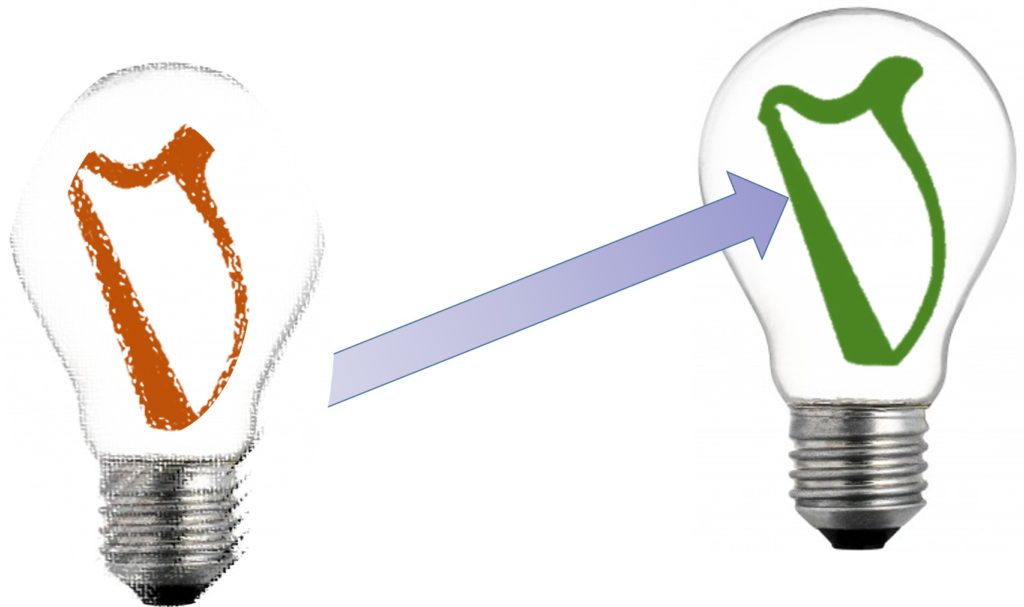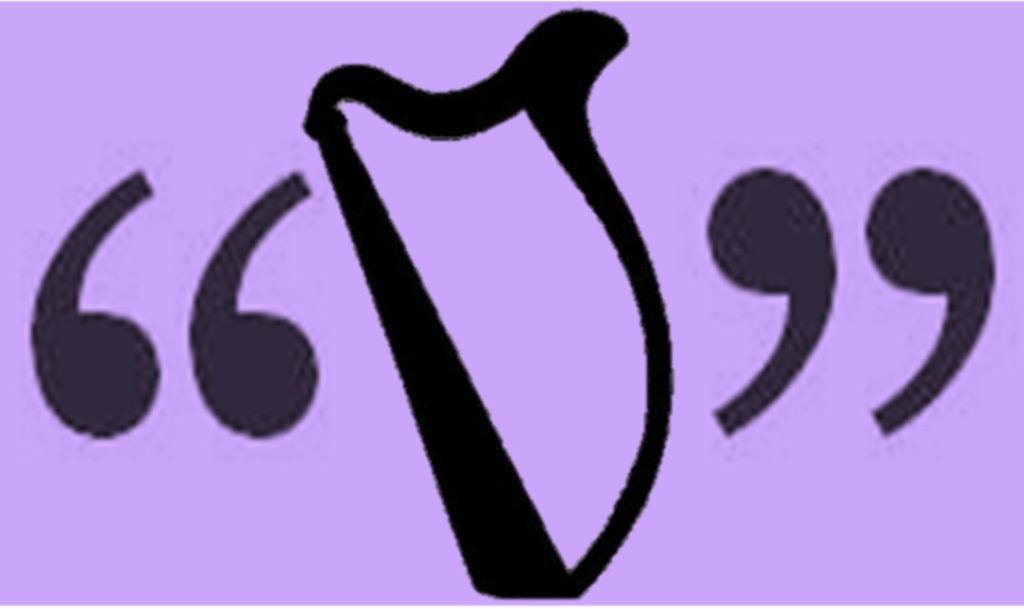Month: August 2016
-
Put on your thinking cap
I don’t know about you – but when I’m excited about learning a new tune I want to get right into it. Do not pass Go, do not collect $200, just start playing. I want to sink my teeth into the music and hold on for dear life while I learn it.
How dumb is that?
There is a smarter way – an approach which would probably allow me to learn the tune faster and get past the ugly stage sooner so I really could get to the part where it’s pretty much just a joy to play. How, you might ask, would that work? I’m so glad you asked!
Well, you can think first! By spending some time focusing on analyzing the tune, you can save yourself a lot of grief and be playing sooner. Now, this isn’t sexy and it might not be fun, but it sure does work.
You can analyze a lot of things about the tune, all of which will help. Identify the time signature. What scale is the tune in? How does the tune lie on the harp? What are the big patterns? What is it telling you?
And do not assume that this can only be done for written music. Although the analysis is done differently – by reading the dots or by listening, the bottom line is the same. Find the patterns, where they repeat, how they move, and more.
Put on your thinking cap, do that work up front and you will be able to move into new tunes more quickly and maybe even more confidently!
-
Box it up!
Being organized will help you get more from your practice time by allowing you to spend more of your precious time at the harp rather than trying to find music. There are many ways to get organized – lists, practice journals, etc. will all help you focus your attention so you can spend the limited time you have to practice on practicing. But once you learn tunes, then what? How do you keep them in your head? You can have a Tune Box.
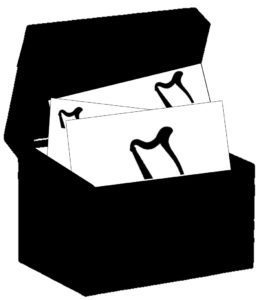 This is a DIY project – you can be as creative (or not) as you choose on this project. You can make it fit your décor, your time available, your favorite color, or you can leave it as you found it – it’s up to you! Here are the Step by Step Instructions:
This is a DIY project – you can be as creative (or not) as you choose on this project. You can make it fit your décor, your time available, your favorite color, or you can leave it as you found it – it’s up to you! Here are the Step by Step Instructions:- Get a packet of 3 x 5 (or 4 x 6) cards and a recipe card box (sized to the cards).
- Paint and decorate the recipe card box as you like (or leave it plain if you’d rather have more time to practice).
- While the box is drying (assuming you’ve painted, decoupaged, or glued things to the box), for each tune you know, write a card. On the card put:
- Name of the tune (as well as it’s “real” name if it is in another language – if you’re squeamish, also include the phonetic pronunciation of the name).
- Key signature (or write out the key in which you play the tune) and mode (if you know it)
- Time signature
- Type of tune (or how you tend to play it – air? song? march? reel? jig? etc.)
- You can also copy (and shrink) the first few measures and glue that onto the card to help you remember how the tune starts (if you only know a few tunes this seems silly….until the time you start to play Tune A and belatedly realize you’re actually playing Tune B which can be a bit disconcerting!)
- Other tunes with which you might put the tune to make a set
- Other items of interest you care to add – they are YOUR cards after all!
I’d suggest you put the cards in alphabetical order just to make them easier to locate in the box – I typically file by the way I think of the tune title (for instance, although the tune is Amhran na Leabhar, I think of it as The Song of the Books, so it is filed under Song not Amhran. But you can do them however you choose (I had them sorted by tune type but that didn’t work for me, so back to alphabetical).
After polishing but before you play your reward tune, pull a card at random and play that tune*. As you learn more tunes this will become more challenging – but it will help you to remember what you have learned and to refresh (to keep in your fingers, not concert ready) all the tunes you have worked so hard to learn. And you can also see physical proof of how much you have learned as you have worked so hard at the harp – it’s all in the Box!
*hopefully the tune (the melody at least!) goes swimmingly, but if it goes pear shaped, then you know you need to work on the tune some more, so you can leave the card out to remind yourself to give that tune a little extra practice so you remember it the next time
-
Quote of the week
Typically, I see or hear things that lead me to think about everything else. This week isn’t like that! This week, the quote pretty much speaks for itself.
We’ve talked before about the importance of being kind to yourself in your practice and in your performance. But this quote takes it another step closer to the origin of the thinking. Here’s the quote:
“Creativity is allowing yourself to make mistakes.
Art is knowing which ones to keep.” Scott Adams
You’ll recognize the source – the creator of Dilbert. He usually has an incisive, if cynical, take, but this quote is certainly spot on – it couldn’t be more right!
There is an craft to making art and it stems from your own willingness to make mistakes, and then to pick up those mistakes and lick them, and keep the ones that taste good (you know, the sonic taste) as you keep going in the music.
My early teachers who taught me two important things with respect to this, although it took me a while to appreciate these gems. The first gem was that, no matter what string you land on, you are never more than one string away from a sound you might prefer! The second nugget was that we don’t make mistakes, we make impromptu improvisations.
For a long time, I really didn’t believe them – I thought they were being “nice” because I made so many mistakes. But over (a very long) time I learned that they weren’t just being nice – they were giving me gentle permission to make mistakes and to learn not only which ones to keep but also to learn my processes for selecting them. They were helping me to learn to do my own taste testing so I could select what worked and toss out what just didn’t speak to me. They were showing me that being willing to make “mistakes” was the point. That this was how I would make my art – by transitioning these excursions into elements of my music. That while safe was comfortable, and it might be creative, it certainly wasn’t moving my art.
So, go make some real whoppers, some complete stinkers, some small and some large mistakes…and see what you can make of them!
-
Make yourself practice – do some good
If I were to be honest out loud, there are more days when I have to force myself to practice than I care to admit. There are always so many other things that need to be taken care of and which require my attention. And often sitting and playing feels too decadent to be work – making it even more difficult to practice and do the work. I know many of us have this same challenge. (And we know this is different from the occasional, “I just don’t feel like practicing! <whine>” malaise we sometimes find ourselves in!)
I recently came across a quote that is modifying my perspective on all this. This is an excerpt – it was part of a talk delivered by Karl Paulnack, Music Director of The Boston Conservatory*. I thought he made a good point – about taking ourselves seriously. He said
“If we were a medical school, and you were here as a med student practicing appendectomies, you’d take your work very seriously because you would imagine that some night at two AM someone is going to waltz into your emergency room and you’re going to have to save their life. Well, my friends, someday at 8 PM someone is going to walk into your concert hall and bring you a mind that is confused, a heart that is overwhelmed, a soul that is weary. Whether they go out whole again will depend partly on how well you do your craft.”
And he’s right! There is little more rewarding than chatting with an audience member after a performance and learning that you have created an experience that touched that person very personally and specifically.
He goes on to say more, about our value as musicians, the effect we can have, the good we can do. All of these are important – and we need to remind ourselves of these truths. No matter our level of play or our amount of experience, we have something to contribute, a good to give – and we have to work to bring our best when we are sharing.
So, go practice – the world is counting on us to do our craft.
